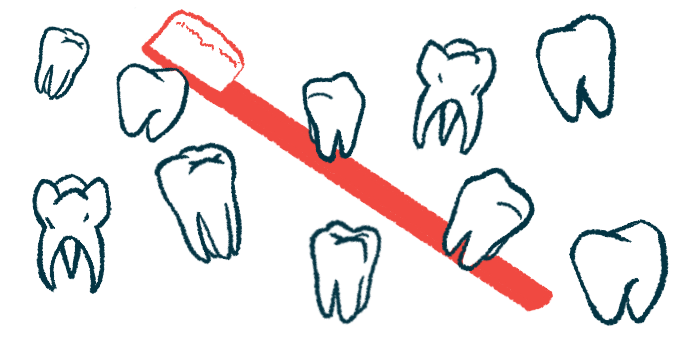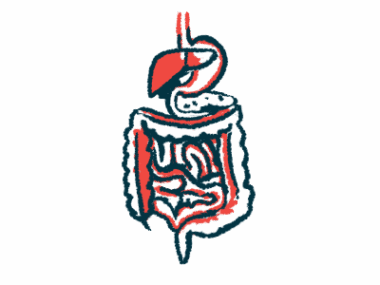Dental infection triggers CAD attack in first known case
Report highlights importance of patients maintaining oral hygiene
Written by |

A dental infection triggered an attack of red blood cell destruction, or hemolysis, in a man in his 40s with cold agglutinin disease (CAD), according to a case report from Japan that, researchers say, highlights the need for CAD patients to maintain good oral hygiene.
Previous studies have reported severe infection leading to CAD-related hemolysis. However, this is the first known case of an infection in or around a tooth (odontogenic infection) triggering such an attack, the researchers noted.
“Because an odontogenic infection could be a trigger of haemolysis, maintenance of oral hygiene and early treatment of bacterial infections are important in patients with CAD,” the researchers wrote.
Treatment in this case required a brief oral surgery, during which clinicians took warming measures to prevent a cold-induced hemolysis attack.
Titled “A case of haemolytic anemia triggered by an odontogenic infection in a patient with cold agglutinin disease,” a report detailing this patient’s case was published in the Journal of Oral and Maxillofacial Surgery, Medicine, and Pathology.
In CAD, self-targeting antibodies attack and destroy red blood cells at low temperatures, leading to anemia, or a deficiency in red blood cells, which transport oxygen throughout the body. Symptoms may include fatigue, pain, and jaundice, or a yellowing of the skin and eyes.
Cold temperatures are the main trigger of CAD, but the researchers noted that “reports indicate that [infection with fever], vaccination, surgical intervention, or trauma could cause exacerbation of haemolytic anaemia” among patients.
No matter what the cause, “once a haemolytic episode is triggered, haematological treatments should be executed as quickly as possible,” the team wrote. They also called for prompt “dental treatments for the source of infection while closely monitoring the patient’s overall condition.”
Dental infection in molar triggered man’s symptoms
The patient in this case, a 47-year-old man diagnosed with CAD 10 years earlier, had first consulted a doctor at the Kyoto City Hospital because of a fever and dull pain in his upper molar. The treating general practitioner prescribed an antibiotic and acetaminophen for these symptoms, but they persisted.
The man also developed fatigue and jaundice, which led physicians to suspect CAD-related hemolysis. A specialist in blood-related disorders confirmed a severe hemolytic attack via blood tests, which showed low red blood cell counts and higher levels of CAD-inducing self-reactive antibodies and hemolysis markers.
A CT scan showed inflammation in the man’s right second molar and right maxillary sinus; the sinuses are the air-filled cavities located in the cheekbones on either side of the nose. An infection at the root of that right second molar appeared to be the cause of the inflammation and hemolytic attack, according to the researchers.
The patient was administered red blood cells to counteract hemolytic anemia, along with preventive antibiotic treatment. Eight days after admission, reductions in symptoms led the clinical team to discharge the man.
Following discharge, he was prescribed an antibiotic for 14 days. The researchers reported that he “showed no signs of haemolysis, and blood tests confirmed the resolution of acute inflammation and improvement in anaemia.”
Steps taken to prevent another CAD attack during oral surgery
The patient was then prepared for surgical extraction of the affected molar under local anesthesia. Given that anesthesia can affect body temperature, increasing the risk of a CAD attack, the clinicians took steps to avoid any such occurrence.
An electric heating blanket, a forced-air warming system, and prewarmed fluids were all used to maintain the man’s body temperature. The team also administered antibiotics to prevent another infection. In total, the procedure took less than five minutes, the team reported.
“Post-surgical blood tests showed no apparent signs of acute infection or severe haemolytic anaemia … leading to the patient’s discharge [one] week after the surgical intervention,” the researchers wrote.
Maintenance of oral hygiene is crucial [for CAD patients], and early treatment of bacterial infections is recommended to prevent haemolytic episodes.
Few prior reports have covered warming during dental surgery for people with CAD, according to the team. Although best practice may be to avoid tooth extraction during the colder months of the year, the urgency of the procedure in this case required surgery in the winter, the team also noted, adding that their multimodal approach to warming and infection prevention was successful in this case.
Per the team, this case has broader implications regarding dental care in people with CAD.
“Maintenance of oral hygiene is crucial, and early treatment of bacterial infections is recommended to prevent haemolytic episodes,” the team wrote.






